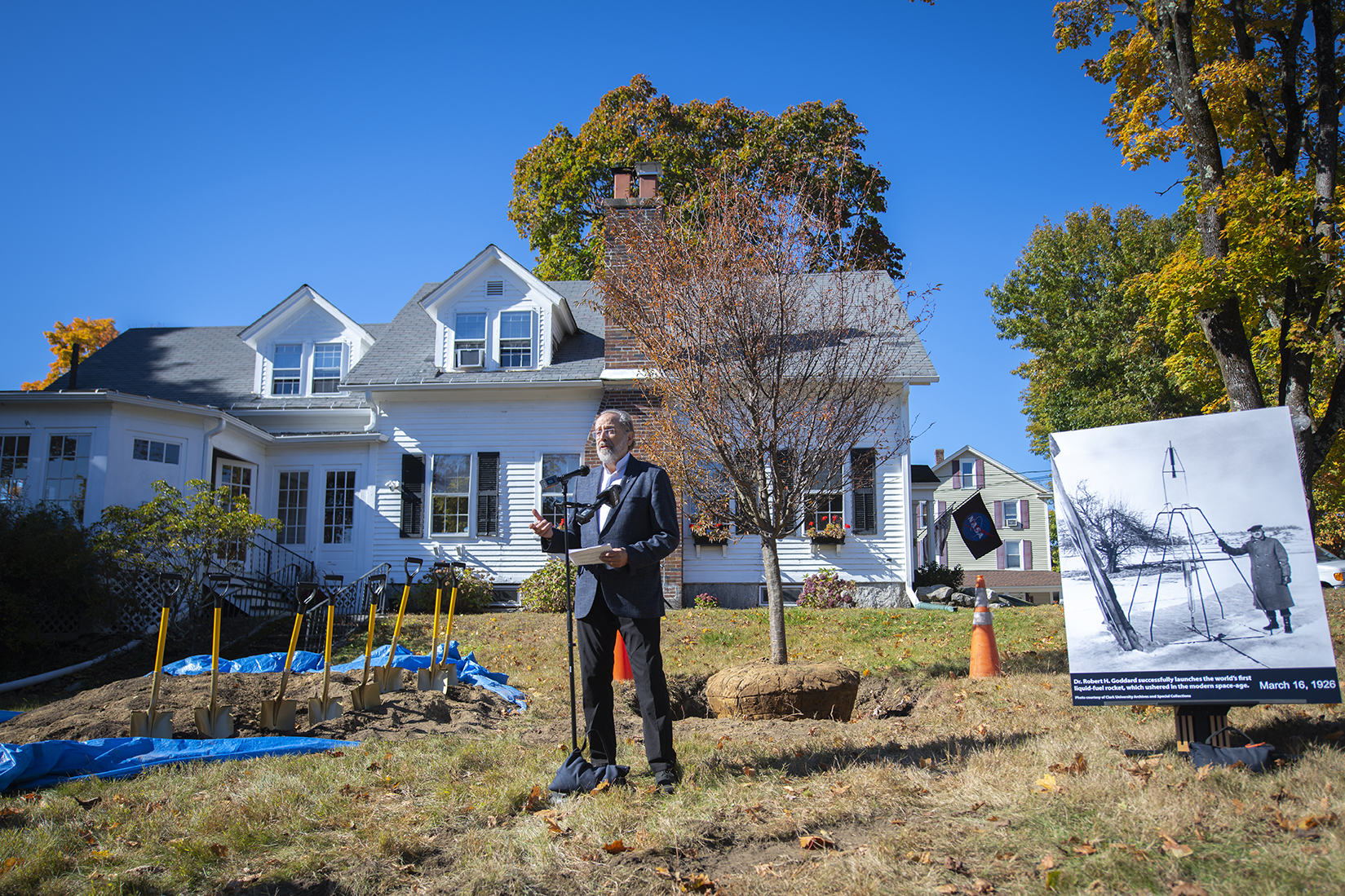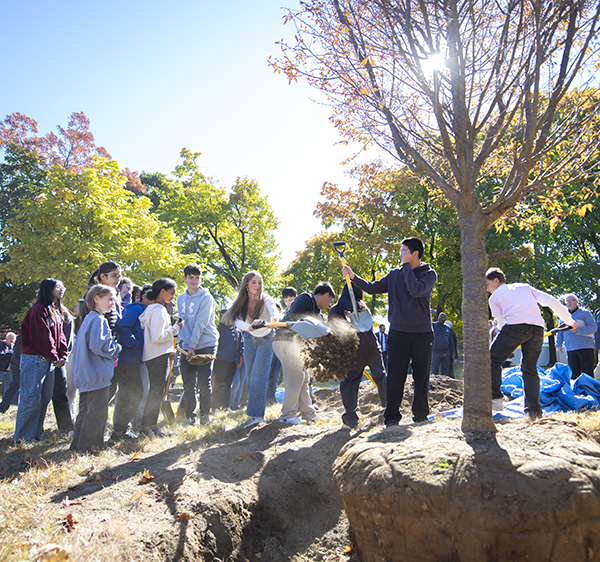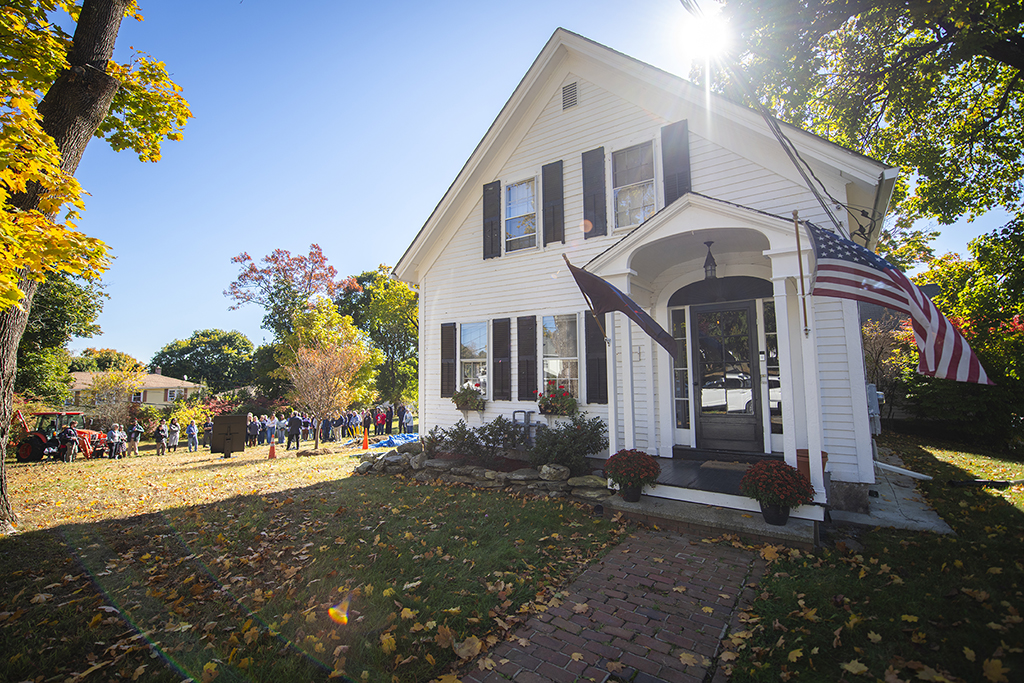Robert Goddard anniversary begins its historic climb

When Robert Goddard delivered the valedictorian address at his graduation from Worcester’s South High School in 1904, he reached a prescient conclusion: “It is difficult to say what is impossible, for the dream of yesterday is the hope of today and the reality of tomorrow.”
Goddard knew something about dreams. Just five years earlier, on Oct. 19, 1899, he climbed his family’s cherry tree and looked up into a sky full of stars and the bright planet Mars. In that moment, young Robert experienced a vision of space travel that occupied him for the rest of his life. Later, he wrote in his journal, “I was a different boy when I descended the ladder. Life now had purpose for me.”
Every year thereafter, Goddard celebrated that climb into the cherry tree as his “Anniversary Day.”
Twenty-two years later, having earned his master’s and doctorate at Clark University — where he also chaired the Department of Physics — Goddard successfully launched the world’s first liquid-fuel rocket. With the centennial of that launch approaching on March 16, 2026, the celebration of his legacy kicked off last week where Goddard’s passion for space began.

On October 18, the day before the 125th “Anniversary Day,” the First Launch Space Centennial Committee invited Worcester students to help plant a new cherry tree in the yard of Goddard’s childhood home on Tallawanda Drive in Worcester. The students are part of the Goddard Scholars Academy, a seven-year college preparatory accelerated academic program that begins at the Dr. Arthur F. Sullivan Middle School and continues at Goddard’s alma mater, South High School. High-achieving Goddard Scholars are eligible to apply to attend Clark tuition-free.
“These students are all Robert Goddard in the cherry tree, looking up and thinking about what’s next,” said Dr. Shannon Conley, executive director of schools for the Worcester Public Schools. “They have great pride in being part of their community.”
Charles Slatkin ’74, founder of The Goddard Project and The Wonder Mission, said the centennial committee’s objective is clear.
“We are committed to recognizing the achievements of both Robert and Esther Goddard,” Slatkin said. He noted that after Goddard’s death in 1945, Esther worked tirelessly to ensure her husband’s legacy — organizing and publishing his papers, pursuing many of his patents, and commissioning his biography. The family house, which is owned by the Wonder Mission, has been renamed the Robert and Esther Goddard Center for Innovation.
Built in 1825, the house was first owned by Robert Goddard’s great-grandfather, Slatkin said. After Robert Goddard died in Baltimore in 1945, Esther returned to the house on Tallawanda Drive and lived there until her death in 1982.
But the First Launch Space Centennial is about more than the Goddards, Slatkin said. “We will also honor the Goddards of today and tomorrow,” including the innovators responsible for today’s scientific and technological discoveries and the young people who will make the discoveries of the future.
Slatkin told the assembled students that he envies the advances they may see in their lifetimes. Just 43 years after Goddard’s “primitive” first launch, he noted, astronauts walked on the moon. “What will you be doing 43 years from today?” he asked.
Slatkin said the centennial celebration’s name was inspired by the 2003 “First Flight” events celebrating the 100-year anniversary of the Wright brothers’ first airplane flight. The First Launch celebration will include planned events and activities like the creation of a National Space Trail, a commemorative stamp, an audiobook of Goddard’s autobiography, and more.
“Worcester is going to be on the world stage in 2026,” Slatkin said. “We need to push the envelope and dream big,” and keep in mind Goddard’s inspiring words to his fellow high school graduates.
The celebration begins with a cherry tree. Unfortunately, the tree that Goddard climbed in 1899 was lost in a storm in 1938. On that day, Goddard — a compulsive diarist — wrote, “Tree destroyed. Must go on alone.”
But the new cherry tree won’t be alone for long, as the Wonder Mission plans to plant additional trees each year. And like NASA’s moon tree project — where seeds that were flown around the moon were distributed and planted at schools around the country — seeds from the new Goddard tree will be shared so students can grow their own “space trees.”



